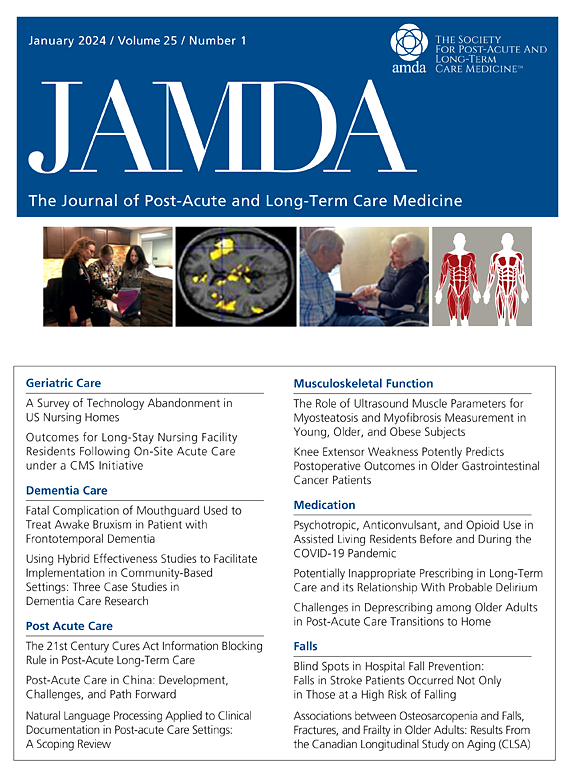“They Want in”: Nursing Home Administrators’ Experiences Managing COVID-19 Pandemic Visitation Restrictions
IF 4.2
2区 医学
Q2 GERIATRICS & GERONTOLOGY
Journal of the American Medical Directors Association
Pub Date : 2025-04-09
DOI:10.1016/j.jamda.2025.105573
引用次数: 0
Abstract
Objectives
To assess how visitation restrictions and protocols were implemented by administrators during the COVID-19 pandemic.
Design
This qualitative study consisted of 156 semistructured interviews repeated at 3-month intervals from July 2020 to December 2021.
Setting and Participants
Interviewers were conducted with administrators of 40 nursing homes across 8 health care markets across the United States.
Methods
Interviews were conducted virtually or via phone. Thematic analysis and modified grounded theory were used to identify themes across coded transcripts.
Results
Findings demonstrated that in-person visitation restriction was followed by nursing homes using new strategies to maintain relationships between visitors and residents, including virtual visitation and visits through windows. Nursing homes also relied on compassionate care and essential caregivers, allowing family members into nursing homes under certain circumstances; however, visitation was still limited. As in-person visitation began again, nursing homes introduced required screening measures and infection control procedures to prevent the spread of infection. Administrators reported that strategies associated with changes to visitation restrictions received mixed reactions from visitors and residents.
Conclusions and Implications
Policymakers should clarify future visitation regulations in nursing homes based on insights from administrators while ensuring clear communication and delineation policies for compassionate care and essential caregiver programs. Policymakers and industry experts should reevaluate and clarify the implementation protocols of future visitation mandates among nursing homes based on insights from administrators and ensure clear policies for compassionate care and essential caregiver programs. Additionally, future screening measures should be given additional attention to ensure efficient and productive protocols.
求助全文
约1分钟内获得全文
求助全文
来源期刊
CiteScore
11.10
自引率
6.60%
发文量
472
审稿时长
44 days
期刊介绍:
JAMDA, the official journal of AMDA - The Society for Post-Acute and Long-Term Care Medicine, is a leading peer-reviewed publication that offers practical information and research geared towards healthcare professionals in the post-acute and long-term care fields. It is also a valuable resource for policy-makers, organizational leaders, educators, and advocates.
The journal provides essential information for various healthcare professionals such as medical directors, attending physicians, nurses, consultant pharmacists, geriatric psychiatrists, nurse practitioners, physician assistants, physical and occupational therapists, social workers, and others involved in providing, overseeing, and promoting quality

 求助内容:
求助内容: 应助结果提醒方式:
应助结果提醒方式:


